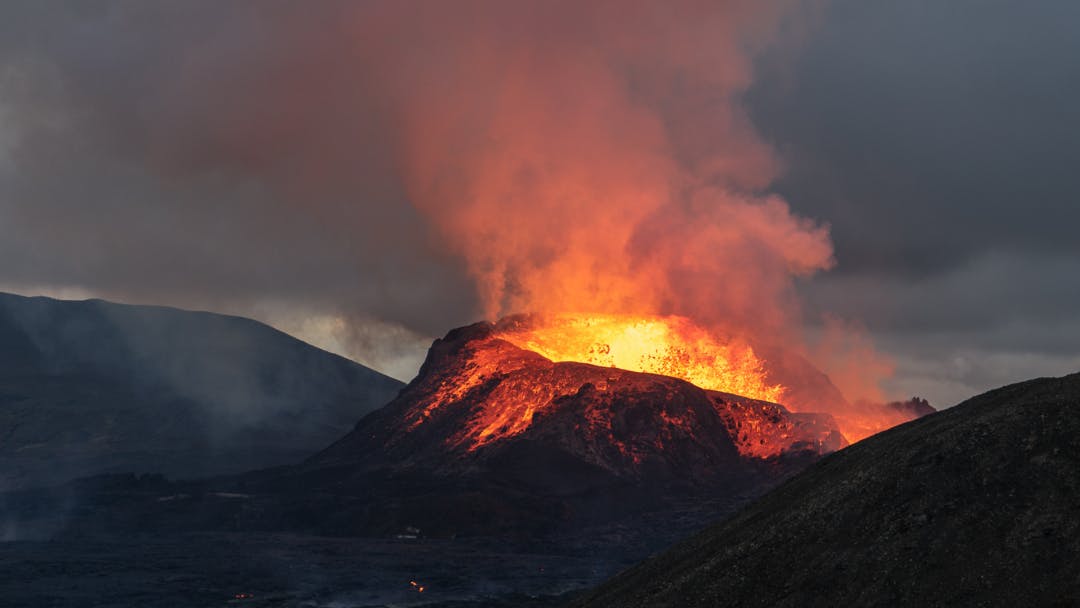
Volcanic eruptions in Reykjanes Peninsula
Everything what you need to know
Volcanic eruptions in Reykjanes Peninsula, which have been a hot topic in Iceland for several months, may still be a mystery to tourists who want to visit our beautiful island and experience the extraordinary Icelandic nature for themselves. In this article, we will try to dispel your doubts by presenting a look at the erupting volcano from people who live in Iceland.
Erupting Volcano: Source of Mysterious Tremors
A series of volcanic eruptions on the Reykjanes Peninsula in southwestern Iceland, which began on March 19th, 2021. They occurred after approximately 800 years of peace in this part of the island. This is considered the beginning of a longer period of activity of this volcanic system. Until November 2023, three episodes of volcanic activity were recorded in the area of the Fagradalsfjall massif. At the end of October 2023, a period of strong seismic activity began in the more western areas of the city of Grindavík, which ended with a fourth, initially intense but short-lived, eruption in December 2023. Another eruption in this area began in January 2024 - this time lava has already entered Grindavík itself. The sixth eruption occurred on February 8th and the last one on March 16th 2024, was the 7th eruption.
The first signs of a possible eruption on the Reykjanes Peninsula were recorded on October 24th, 2023. An increase in the frequency and intensity of earthquakes was noticeable on November 10th 2023, prompting the evacuation of Grindavík residents. Around 3800 people, representing almost 1% of Iceland's total population, were displaced, but the evacuation operation went smoothly and safely.
Since then, the people of Grindavík have been allowed to return home and take their remaining valuable belongings. In December 2023, people from the city of Grindavík were allowed to return to their homes, but only childless families and young people were allowed - in the event of an evacuation, they could easily leave the city. Today, people who work there during the week can come to Grindavik, but this is not recommended by the Icelandic police. Residents enter there at their own risk.
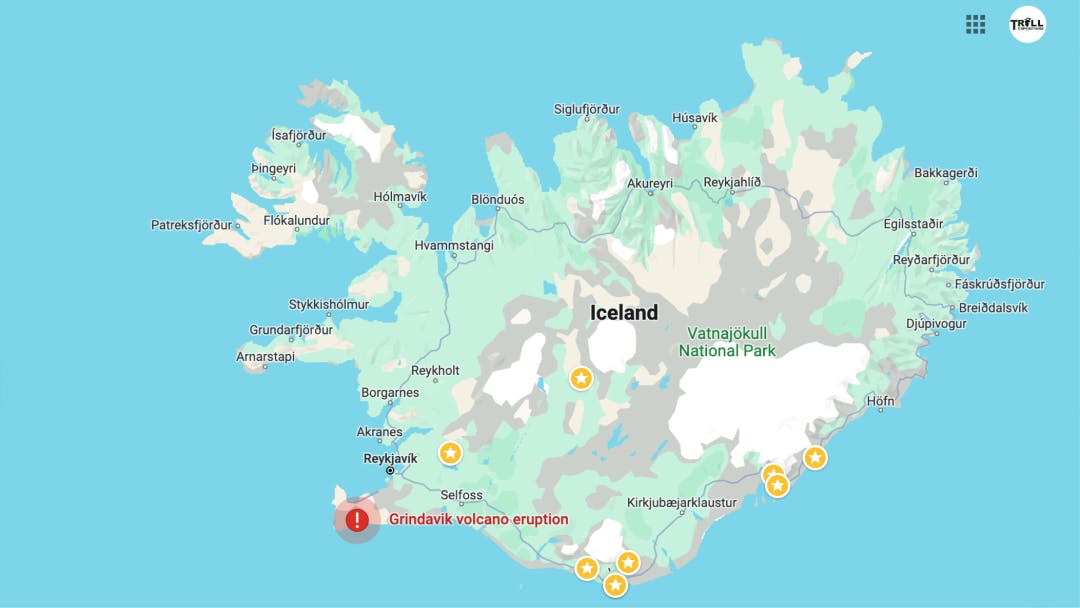
The course of the eruption: A spectacle of nature in four acts
Dates of four volcanic eruptions in 2023/24:
- December 18th 2023 - The eruption occurred after a series of small earthquakes, located approximately 4 km northeast of Grindavík. Lava fl owed at a speed of 100-200 cubic meters per second. The eruption ended after a few days, subsiding in intensity.
- January 14th 2024 - Another eruption occurred approximately 400–500 meters north of Grindavík, resulting from seismic activity in the Sundhnúksgígar crater. The eruption lasted for several days and the volcanic activity gradually disappeared.
- February 8th 2024 - A third eruption began north of Sýlingarfell after intense seismic activity. The lava fountains reached heights of 50 to 80 meters. It ended the next day.
- March 16th 2024 - A fourth eruption occurred between Hagafell and Stóra-Skógfell. Two lava flows flowed in different directions, touching the protective walls of the Svartsengi power plant.
- May 29th 2024 - fifth eruption started on the Reykjanes Peninsula North-East from Sýlingarfell.
In each of the above cases, the Blue Lagoon was evacuated or closed to tourists.
Evacuations and safety: Priority for human safety
In response to the volcanic eruption in Iceland, the authorities took quick and effective measures to ensure the safety of residents of endangered areas. Evacuations were carried out in accordance with previously developed emergency plans, which took into account various threat scenarios.
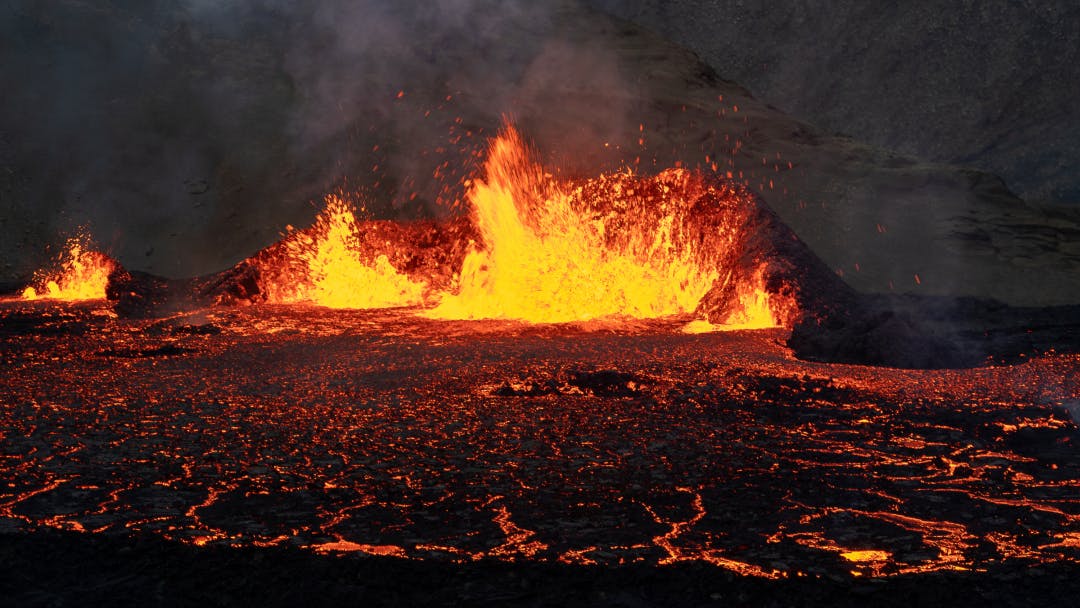
Impact on transport and tourism: everything continues as normal
Keflavik International Airport to operate normally, with regular flights. National roads are also passable, allowing travel between cities and tourist attractions. Roads to Blue Lagoon and Grindavik are closed.
It is worth emphasizing that the Department of Civil Protection and Emergency Management constantly monitor the situation and adapt to changing conditions to ensure the safety and comfort of travelers.
Despite the volcanic eruption, Iceland remains an attractive travel destination, offering unforgettable natural and cultural experiences for tourists from all over the world.
Scientific research: Analysis of volcanic activity
Scientific research conducted in the context of volcanic eruptions in Iceland involves not only the analysis of the composition of volcanic gases and dust or geological research, but also continuous monitoring of the situation by specialized scientists.
Experts from various fields of science constantly monitor any changes in volcanic activity using advanced technologies and tools.
24/7 monitoring of the situation allows for quick response in the event of dangerous phenomena, which in turn translates into increased safety of residents and tourists. Scientific research therefore plays a key role not only in understanding volcanic activity itself, but also in developing effective strategies for crisis management and minimizing potential damage.

Social response: Solidarity in the face of disaster
The Icelandic society, well acquainted with volcanic activity, supports those affected in solidarity.
The Government of Iceland has taken several steps to provide financial and housing support to those affected by the eruption, providing Grindavík residents with alternative rental housing.
Future Outlook: Building Security
It is worth emphasizing that the construction of a protective barrier around the Blue Lagoon and the Svartsengi Power Plant is just one example of actions taken to increase safety. A strategic plan for the construction of protective barriers was established long before the last seismic events in the area. Despite the challenges posed by the eruption, construction work continued, demonstrating the determination to protect important infrastructure facilities.
Important notes:
- What is happening now on the Reykjanes Peninsula is not similar to the event that took place in 2010 in Eyjafjallajökull - you can read more here - volcanic eruptions of Eyjafjallajökull. The 2010 Eyjafjalljökull eruption was classified as an explosive eruption. Situated beneath a glacier, the lava interacting with water led to ash plumes, disrupting flights for six days. On the other hand, the Reykjanes eruptions have been effusive fissure eruptions, characterized by gentle lava flows with little ash and gas emissions.
- The volcanic eruption in Iceland did not introduce a state of emergency on the entire island. Areas outside the Reykjanes Peninsula are functioning normally and are not at risk.
Our guest: We asked a real enthusiast!
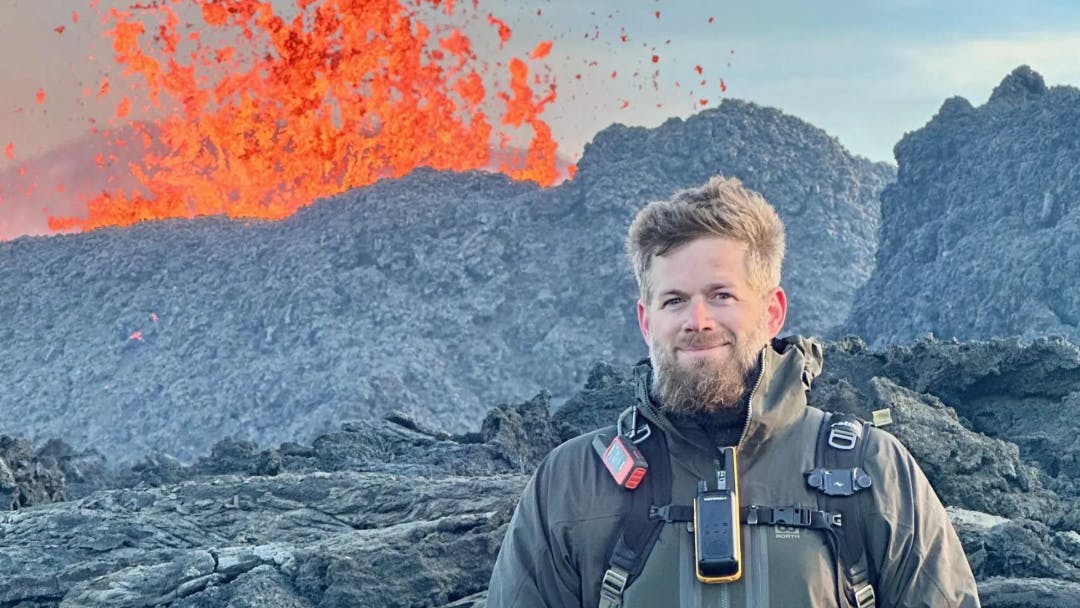
*photo from Jeroeni's blog
We invited Jeroen Van Nieuwenhove, a Belgian photographer who lives and works in Iceland, to talk about volcanic eruptions. Jeroen is fascinated by the topic of volcanoes, and he shares his vast knowledge on his social media.
Check out his Instagram and you will fall in love with his photos and videos!
- When and how did your passion for observing volcanic eruptions begin? Where do you have such extensive knowledge on this subject?
I have been fascinated by volcanoes ever since I was a kid. I was fascinated by the footage produced by volcanologists such as Katia and Maurice Krafft (make sure to watch 'Fire of Love' on Disney+). Seeing an erupting volcano has been a childhood dream, which finally came true in 2021 when the first eruption of Fagradalsfjall began. Because I have been interested in volcanoes for a long time, I have also tried to consume a lot of knowledge about them. Whether it was through documentaries, reading scientific papers, ... It all adds up in the end. When the first signs started showing that Reykjanes Peninsula began to awaken in 2020, I started brushing up my knowledge on this area to get a good understanding of what was going on. On top of that, I read and listened to everything our respected volcanologists had to share in the media over the last years.
- How do volcanic eruptions aff ect your everyday life?
The ongoing volcanic eruptions on Reykjanes have had a big impact on my life. As a full-time professional photographer I have spent a lot of time, weeks and even months, documenting these events for (news) media and also for myself. In 2021 I self-published a book about the Geldingadalir eruption, which lasted 6 months. The last three years everything in my work has revolved around these events. The last year I have also committed to informing and educating people on the ongoing events on Reykjanes through my social media channels to help people gain a better understanding of what has been going on.
Jump to Jeroen’s channel on Instagram.
- What are the most common questions you get from your followers about the volcanic eruption?
I think by far the most common question I get is whether people can still travel to Iceland and whether or not it is safe. To get this out of the way immediately: YES, it is safe! The current events impact an incredibly small area of Iceland, which most people generally just drive through to get to Reykjavík. There is no danger unless you are in the immediate vicinity of the eruption. Therefore there is no need to change or cancel travel plans to Iceland.
- What are your predictions for future volcanic activity in Iceland?
It's extremely difficult, and downright impossible, to make accurate predictions about future events. However, we can assume the events on Reykjanes may go on for a century and even longer. If we look at the area historically, we know that an active period on the Reykjanes Peninsula usually lasts for a long time, where the first event triggers other volcanic systems on the peninsula. However, that doesn't mean we will see a continuous chain of events. We may also see pauses in activity of multiple years. And then there are of course all the other volcanoes in Iceland, some of which have been overdue for many years already such as Hekla, Grímsvötn and Katla. Iceland is volcanically very active and sees eruptions on average every 5 years.
- Due to so much volcanic activity, do you feel safe in Iceland?
I feel perfectly safe here. Iceland has a history of living side-by-side with volcanoes. We have some of the best volcanologists in the world living and working here. Our volcanoes are being studied and monitored 24/7 by these people. On top of that, Icelanders know to respect nature. When a small eruption occurs, we flock to it and celebrate (if it can happen in a safe way). When a big and disastrous eruption occurs, we move out of the way and let nature happen. If a community is aff ected, we help them and try our best to protect it (look at all the incredible work that has been done building dams around Grindavík). What would life be if we would live in a constant fear of the volcanoes we live next to?
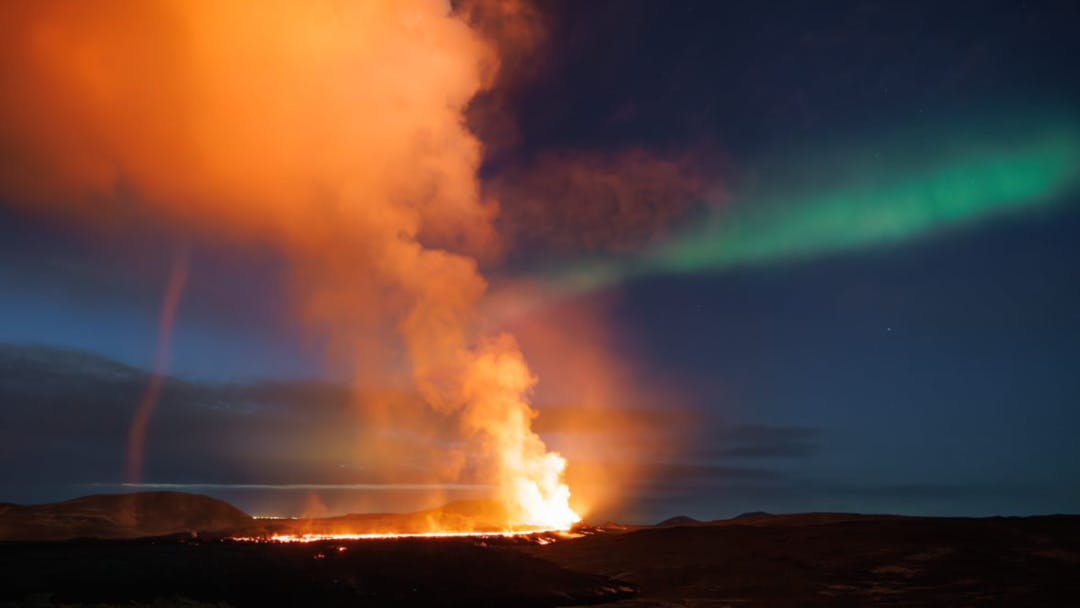
*photo from Jeroeni's Instagram
Summary:
Looking to the future, Iceland realizes that volcanic eruptions will be a part of its life, which is why it strives to constantly improve its prevention and response strategies to ensure the safety of its inhabitants and tourists visiting the island. By continuously investing in scientifi c research, protective infrastructure and emergency management procedures, Iceland strives to be as prepared as possible for possible challenges related to volcanic activity.
Key points:
- Everyone is safe!
- ERUPTION NOT AFFECTING OUR TOURS
- The eruption site is far away from any other location we will be passing by on our itineraries, and it is a restricted area already monitored by the authorities!
- Flights to Iceland are not affected by the eruption!
- Blue Lagoon is closed (check here Blue Lagoon)

Most useful websites with information:
Icelandic Meteorological Office
We have also prepared a short video about what our Trolls have to say about the volcano :) Watch it here - link
We hope that this article has dispelled your doubts and that we will soon meet you on our trips around the island. Bon voyage! 🌋🇮🇸